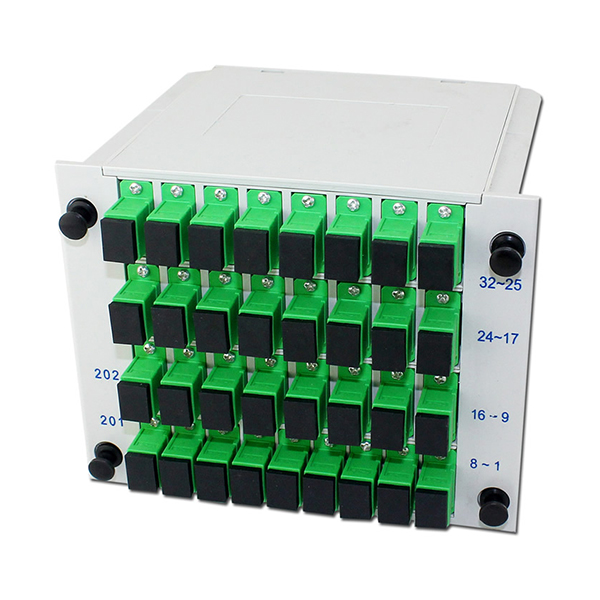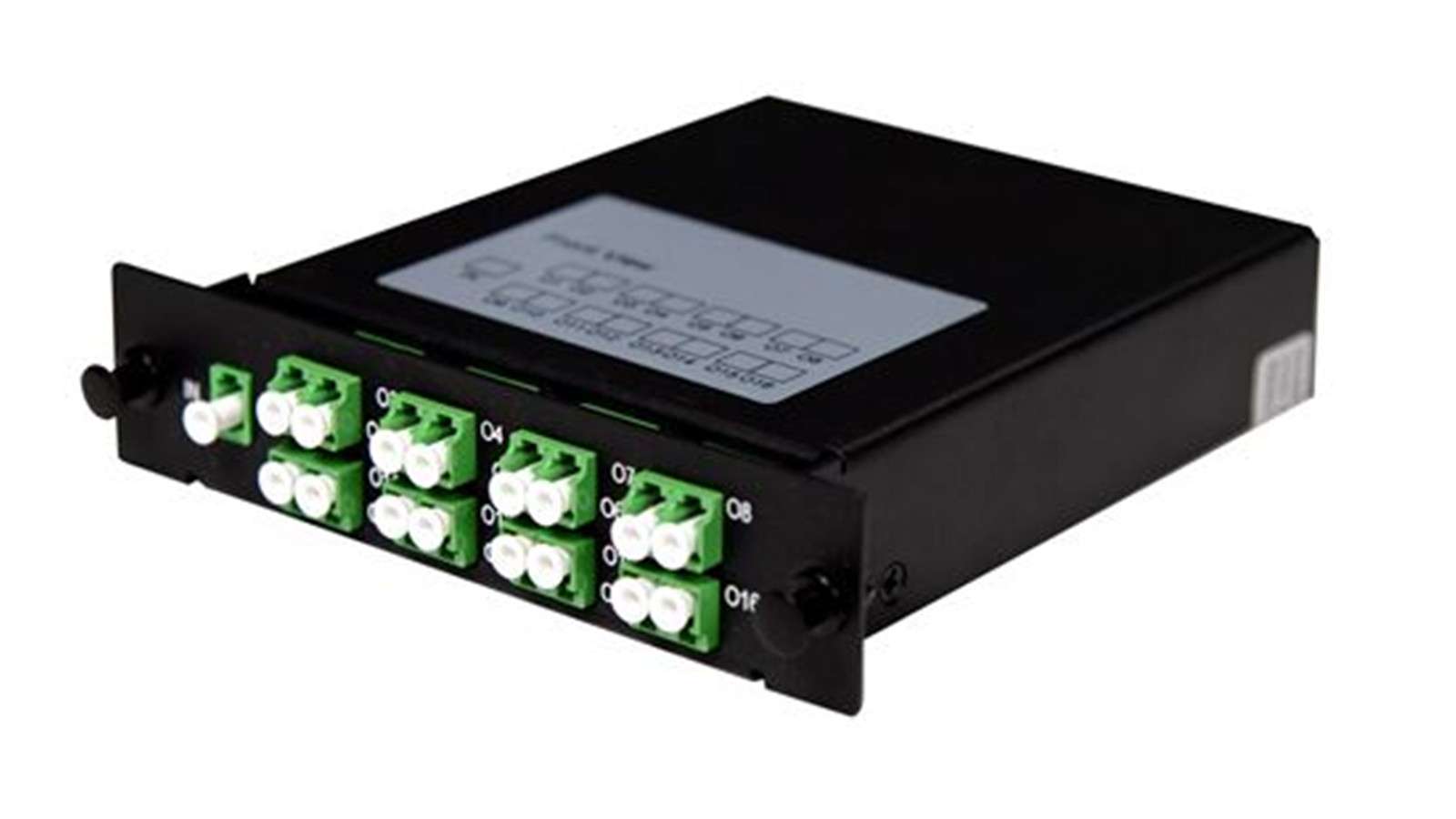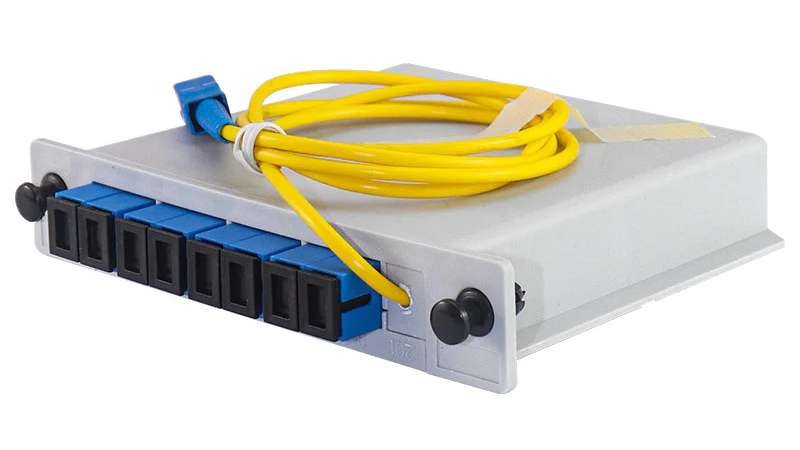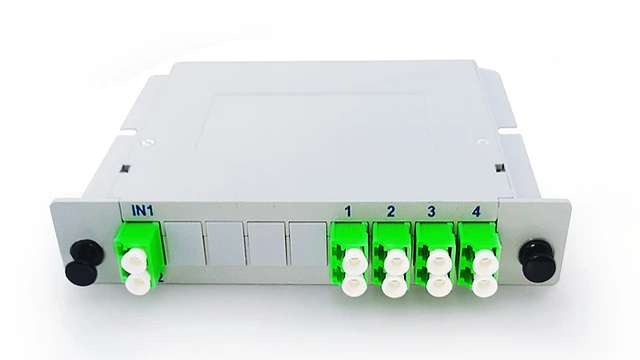The Future of PLC Cassette Modules in FTTH Applications

The Future of PLC Cassette Modules in FTTH Applications
As the demand for high-speed internet continues to grow, the future of PLC cassette modules in FTTH (Fiber To The Home) applications looks promising. These compact and versatile devices offer a range of benefits for network engineers and fiber optic technicians. By using cassette type fiber optic splitters, FTTH networks can achieve improved signal quality and reliability. Additionally, the ease of installation and scalability provided by PLC cassette modules make them an attractive option for network expansion. However, successful integration requires careful consideration of installation, deployment, and integration factors. In this blog, we will explore the potential of PLC cassette modules in FTTH networks and delve into their benefits, technology, and key considerations for successful implementation.
Exploring the Benefits and Technology of PLC Cassette Modules in FTTH Networks
PLC cassette modules offer a range of benefits that make them an ideal choice for FTTH networks. One of the key advantages is the improved signal quality and reliability they provide in FTTH applications. These modules utilize advanced fiber optic technology to ensure efficient transmission of data over long distances, resulting in minimal signal loss and enhanced network performance. With PLC cassette modules, network engineers can achieve optimal signal integrity, even in complex fiber optic communication systems.
Another significant benefit is the ease of installation and scalability offered by PLC cassette modules. Their compact design allows for seamless integration into existing FTTH networks without requiring extensive modifications. This makes them highly convenient for network expansion or upgrades. Additionally, their modular nature enables technicians to easily add or remove cassette type fiber optic splitters as per network requirements, providing flexibility and adaptability.
Understanding the technology behind PLC cassette modules is crucial for their successful implementation. These modules operate on the principle of Planar Lightwave Circuit (PLC) technology, which utilizes optical waveguides to split or combine signals within a single chip. The components within a PLC cassette module are carefully designed to ensure efficient light distribution and minimize signal loss. Factors such as fiber alignment, connector types, and wavelength compatibility play a vital role in achieving optimal performance.
By exploring the benefits and technology of PLC cassette modules in FTTH networks, we can gain a deeper understanding of their potential and how they contribute to reliable fiber optic communication.

Key Factors for Successful Integration of PLC Cassette Modules
To ensure the successful integration of PLC cassette modules in FTTH networks, several key factors need to be considered. These factors include choosing the right PLC cassette module and following installation and deployment best practices.
Choosing the Right PLC Cassette Module
When selecting a PLC cassette module, it is essential to consider various factors to ensure compatibility and optimal performance. One important consideration is the capacity of the cassette module, which should align with the network's current and future requirements. Additionally, compatibility with existing FTTH network infrastructure, such as connectors and fiber types, should be evaluated to ensure seamless integration.
Another factor to consider is the splitting ratio of the cassette module. The splitting ratio determines how signals are divided among output ports. It is crucial to choose a splitting ratio that meets the specific needs of the FTTH network, balancing signal distribution and power budget requirements.
Installation and Deployment Best Practices
Proper installation techniques are vital for achieving optimal performance from PLC cassette modules. It is essential to follow industry standards and guidelines during installation to minimize signal loss and maintain signal integrity. This includes ensuring accurate fiber alignment, proper connector termination, and appropriate cable management practices.
Efficient deployment and network integration are equally important for successful integration. Network engineers should carefully plan the placement of PLC cassette modules within the FTTH network architecture to optimize signal distribution and minimize signal degradation. Adequate spacing between modules should be maintained to avoid interference or crosstalk.
By considering these key factors when integrating PLC cassette modules into FTTH networks, network professionals can ensure seamless compatibility, optimal performance, and reliable fiber optic communication.
Evaluating PLC Cassette Splitters vs. Alternatives
When considering the use of PLC cassette splitters in FTTH networks, it is important to evaluate their advantages compared to alternative splitter options. PLC cassette splitters offer several benefits that make them a preferred choice for many network engineers.
Advantages of PLC Cassette Splitters
Compared to other splitter options, PLC cassette splitters provide cost-effectiveness and space-saving advantages. These compact modules can accommodate multiple fiber connections within a single cassette, reducing the need for additional equipment and saving valuable rack space. This makes them particularly suitable for deployments where space is limited or costly.
Additionally, PLC cassette splitters offer excellent signal quality and low insertion loss, ensuring reliable transmission in FTTH applications. Their design allows for efficient splitting of optical signals without compromising performance or introducing excessive signal loss. This makes them ideal for distributing signals to multiple subscribers in an FTTH network.
Considerations for Alternative Splitter Options
While PLC cassette splitters have numerous advantages, it is essential to consider alternative splitter technologies based on specific requirements and application scenarios. Other splitter options include fused biconic taper (FBT) splitters and wavelength selective switch (WSS) splitters.
FBT splitters are commonly used in simple point-to-multipoint applications but may not be as suitable for complex FTTH networks due to their limitations in terms of splitting ratio and scalability.
WSS splitters, on the other hand, offer greater flexibility by allowing dynamic control over signal routing but may come at a higher cost and require more sophisticated network management systems.
Understanding the limitations and strengths of alternative splitter options will help network engineers make informed decisions when selecting the most appropriate solution for their specific FTTH network requirements.

Overcoming Common Issues in FTTH Networks with PLC Cassette Modules
FTTH networks utilizing PLC cassette modules may encounter common issues related to signal loss, power budget challenges, environmental factors, and interference. Understanding these challenges and implementing appropriate strategies can help ensure reliable performance.
Addressing Signal Loss and Power Budget Challenges
Signal loss is a critical concern in FTTH networks, especially over long distances. To mitigate signal loss, network engineers can employ various techniques such as using high-quality optical fiber cables, optimizing connector connections, and minimizing the number of splices. Additionally, monitoring the power budget is crucial to ensure that sufficient power is available for all connected devices. Regular power measurements and adjustments can help maintain optimal signal strength throughout the network.
Dealing with Environmental Factors and Interference
Environmental factors like temperature variations, humidity, and dust can impact the performance of PLC cassette modules. Proper protection measures should be implemented to shield the modules from these elements. This includes using suitable enclosures or cabinets that provide adequate sealing and ventilation to prevent moisture buildup or excessive heat.
Interference from external sources such as electromagnetic radiation or neighboring fiber optic cables can also affect FTTH network performance. Employing proper cable routing techniques, maintaining appropriate spacing between cables, and using shielding materials when necessary can minimize interference and ensure reliable network operation.
By addressing signal loss, power budget challenges, environmental factors, and interference issues proactively, network engineers can overcome common obstacles encountered in FTTH networks with PLC cassette modules.
Advancements and Maintenance Guidelines for PLC Cassette Modules in FTTH Networks
Staying updated with the latest advancements and following proper maintenance guidelines are crucial for maximizing the performance and longevity of PLC cassette modules in FTTH networks.
Future Trends and Advancements in PLC Cassette Modules
The field of fiber optic technology is constantly evolving, and PLC cassette modules are no exception. Ongoing research and development efforts aim to enhance their capabilities further. These advancements may include improved splitting ratios, higher port densities, enhanced signal processing algorithms, and compatibility with emerging fiber optic communication standards. By exploring the latest developments and innovations, network engineers can anticipate future enhancements that will contribute to more efficient FTTH networks.
Best Practices for Maintenance and Troubleshooting
Regular maintenance is essential to ensure optimal performance of PLC cassette modules. This includes periodic inspections to check for any physical damage or loose connections. Cleaning connectors and inspecting fiber ends can help prevent signal degradation caused by dust or contamination.
In case of issues or malfunctions, troubleshooting techniques should be employed to identify the root cause. This may involve checking power levels, verifying connector integrity, or conducting tests using specialized equipment. Network engineers should follow manufacturer guidelines and consult technical resources when troubleshooting common issues related to PLC cassette modules.
By embracing future trends and advancements while adhering to best practices for maintenance and troubleshooting, network professionals can make the most out of their PLC cassette modules in FTTH networks.

Embracing the Future of FTTH Networks with PLC Cassette Modules
PLC cassette modules offer significant advantages in FTTH networks, providing improved signal quality, scalability, and cost-effectiveness. Proper integration and maintenance are crucial for ensuring optimal performance and reliability. By staying updated with the latest advancements in PLC cassette module technology, network professionals can leverage their full potential and stay ahead in the rapidly evolving field of fiber optic communication. Embracing the future of FTTH networks with PLC cassette modules means embracing efficient and reliable fiber optic connectivity for homes and businesses. With their compact design, ease of installation, and compatibility with existing infrastructure, PLC cassette modules are poised to play a vital role in shaping the future of FTTH networks.
See Also
The Future of Fiber Preconnection Solutions: Exploring MTP-LC Duplex 12cores Trunk Cable Patchcord
The Future of CTO Boxes: Exploring the Compatibility and Performance of Huawei Mini SC Connectors
Choosing the Best Fiber Optic Splitters: The ABS PLC Advantage
The Ultimate Guide to HDMI Cables: Function, Importance, and Future Developments
Demystifying 1x4 PLC Fiber Optic Splitters: Exploring Components and Benefits
About US
Follow Us
AnetFiber company's main products are indoor and outdoor optical fiber cables, outdoor waterproof pre-connected fiber-to-the-home products, PLC optical fiber splitters, optical fiber jumpers and pigtails, MTP®/MPO high-density big data product solutions, optical fiber field quick connectors and research and development molding, injection molding and production of optical fiber distribution boxes, optical fiber chassis cabinets, the market has expanded to the world, Europe, America, Asia, the Middle East and Latin America.
Address
Shenzhen City, Baoan District, Yanluo Street, Tangxiayong Community, Yangyong Industrial Road, Tonggangda New Energy Vehicle Park 406
Contacts
+86 199 2655 3586

